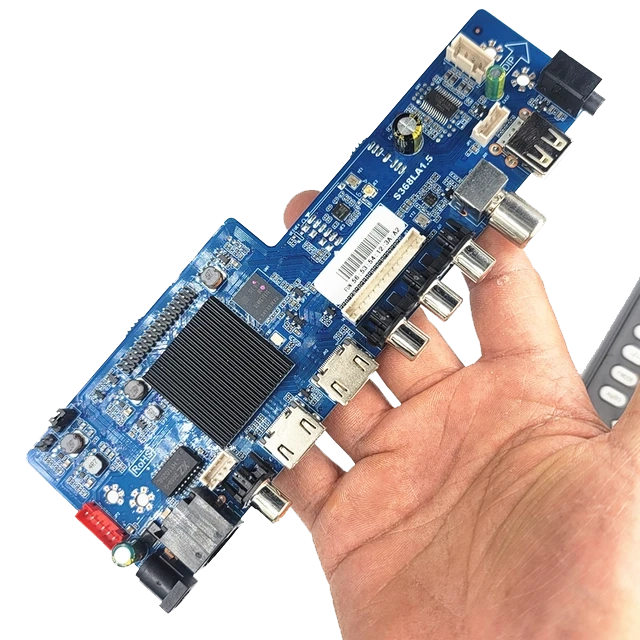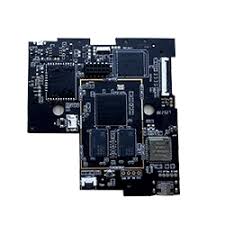
Venture into the sphere of mobile app programming for compact board computers. This all-inclusive guide will introduce you to the key concepts and applied strategies to successfully develop your own Android-enabled SBC assignments. From knowing ground rules of Android coding to navigating the intricate world of SBC hardware, this guide will guide you through a efficient application milestone.
- Examine the multiple of available SBC configurations and their unique features.
- Gain proficiency in essential Android development tools, including Android Studio, SDKs, and emulators.
- Internalize the intricacies of tuning your SBC workspace for seamless Android execution.
Delve into best practices for engineering robust and optimized Android apps tailored for SBC hardware constraints.
Constructing Android Solutions via SBCs
Harnessing capabilities of a Single Board Computer (SBC) for Android application crafting is an increasingly widely adopted approach. These compact and versatile hardware provide a cost-effective framework for experimentation, enabling technologists to explore the capabilities of Android without the need for a traditional workstation. By utilizing the SBC's resources such as its processor, memory, and connectivity options, developers can formulate Android applications that range from simple utilities to more complex software. The skill to customize the hardware and software environment further boosts the flexibility of SBCs for Android development, making them a advantageous tool for both amateurs.
Unlocking the Power of Android Dev Boards for IoT Projects
For budding creators delving into the world of Internet of Things (IoT), Android dev boards present a reliable platform to bring their pioneering ideas to life. These compact boards, often equipped with advanced hardware and engaging software development kits (SDKs), provide a reliable foundation for constructing a wide range of IoT services. From home oversight systems to utility monitoring tools, Android dev boards empower businesses to deploy cutting-edge IoT projects with convenience.
- Capitalizing on the extensive Android ecosystem, developers can connect with a vast library of libraries specifically designed for IoT solutions. This abundance of resources allows for optimized development and empowers the creation of refined IoT solutions.
- Additionally, Android dev boards often feature embedded connectivity options such as Wi-Fi, Bluetooth, and cellular, facilitating seamless data exchange with other devices and cloud platforms. This connectivity capability is crucial for enabling real-time data acquisition and remote monitoring of IoT applications.
- Last but not least, the community-driven models of Android dev boards fosters a thriving ecosystem of developers, providing ample aid for tackling any challenges encountered during the development process.
Scrutinizing Multimedia Potentials of Android SBCs
The field of multimedia applications is constantly growing, pushing the boundaries of what's possible. In this dynamic landscape, Android System-on-Chips (SBCs) have emerged as a hardy alternative for developers seeking to assemble innovative and engaging experiences.
The aforementioned compact yet capable SBCs grant a distinct blend of processing efficiency, connectivity, and multimedia functions that make them excellent for a large range of applications.
About high-definition video playback to prompt audio processing, Android SBCs are armed to handle the requests of today's multimedia scene.
- Besides, their open-source nature permits developers to adapt hardware and software to conform to specific application demands.
- The given level of modifiability facilitates for developers to surpass the limits of multimedia innovation.
Unlock Personalization on Android Dev Boards
A development board namely the Raspberry Pi or distinct Nexus Player presents a unique opportunity to tweak your Android experience. By immersing with the underlying foundation, you can reshape everything from the system shell to individual applications. This level of flexibility allows hackers to test limits and develop truly bespoke Android ecosystems. Whether you're planning to upgrade your device's performance, investigate new possibilities, or simply resolve your curiosity, a dev board can open up a world of potential.
- Grasp the fundamentals of Android development
- Develop custom ROMs and kernels
- Experiment with new apps and features
- Connect your device to other hardware
Troubleshooting SBC Android Issues
When working with Android development on Single Board Computers (SBCs), you might encounter a variety of challenges. These can range from simple configuration errors to complex software bugs. Effective debugging and troubleshooting are crucial for identifying the root cause of these problems and restoring your Android environment to full functionality. Utilize the vast resources available online, such as forums and documentation, to gain insights into common issues faced by other developers in similar setups.
Start by carefully reviewing your runtime reports for any error messages or warnings that might provide clues about the problem. Apply a thorough logging strategy within your Android application to capture relevant information during runtime. This can help pinpoint specific areas where errors are occurring. Don't hesitate to experiment different configurations and settings to see how they affect the behavior of your system.
- Apply time in understanding the hardware capabilities of your SBC, as limitations in processing power or memory can contribute to Android performance issues.
- Craft a strong understanding of the Android SDK and its kits to effectively debug your applications.
- Stay updated with the latest distributions of both Android and your SBC's firmware, as these often include bug fixes and performance improvements.
Maximizing SBC Android Capabilities
When implementing Android-based integrated circuits single board systems, maximizing responsiveness is paramount. To achieve this, developers and engineers can leverage a collection of measures. This involves diligently optimizing software and hardware components to maintain seamless processing. Key areas for improvement include capacity planning, power consumption, network connectivity, and application performance.
- Highlighting real-time signal processing is essential for applications that demand immediate interactions.
- Capitalizing on lightweight platforms can significantly reduce memory consumption, thereby boosting overall capability.
Regularly improving the Android operating system and platforms is important for addressing security exploits and obtaining stability boosts.
Implementing Android SBC Security Best Practices
Securing your Android systems against threats is paramount. Utilizing sound security best practices for your Android System-on-a-Chip (SBC) implementation can significantly mitigate risks. Regularly update your SBC's software to address vulnerabilities. Initiate robust access safeguards to manage user permissions and network interfaces. Conduct systematic security evaluations to identify potential issues and apply necessary solutions.
- Educate your users about common security threats and best practices for protecting their devices.
- Encode sensitive data at rest and in transit using strong ciphers.
By adhering to these best practices, you can create a more secure environment for your Android SBC.
Leveraging Advanced Android Development with SBCs
The world of embedded Electronics (SBCs) provides a compelling platform for developing revolutionary Android applications. By uniting the power of Android with the unique capabilities of SBCs, developers can create robust solutions across diverse markets. This approach offers remarkable flexibility and customization options, advancing the development of focused applications that cater to specific requirements. Whether it's for automotive systems, SBCs coupled with Android development open up a wide range of possibilities.
- Harnessing the low-power nature of SBCs for resource-constrained environments.
- Assembling Android applications with timely responsiveness for time-sensitive tasks.
- Merging Android's user interface capabilities with custom hardware peripherals for a smooth experience.
The combination of Android and SBCs empowers developers to push the horizons of innovation, yielding transformative applications that reshape various fields.
Shaping Android's Evolution with SBCs
The field of Android development is rapidly evolving, with Single Board Computers (SBCs) emerging as a prominent force. These compact and versatile instruments offer developers a powerful platform for experimentation, prototyping, and even full-scale application deployment. With their affordability, expandability, and strengthening ecosystems, SBCs are poised to alter the way we create Android applications. Builders are eagerly embracing this cutting-edge paradigm, unlocking a world of possibilities for creating captivating user experiences.
From embedded systems to smart devices, SBCs provide the perfect backbone for a wide range of Android projects. Utilizing the power of open-source software and hardware, developers can formulate innovative solutions that meet real-world challenges.
Project Ideas Using Android SBCs
Android Single Board Computers (SBCs) are versatile little machines that can be used to create a wide range of projects. Whether you're a newcomer, there are plenty of thrilling project ideas to explore. One accepted category is connected living, where you can use an Android SBC to regulate your devices. You could also construct a custom media center, project content on a larger screen, or even work on robotics and computer science.
- Multiple android board Several Some Numerous
- Various other ideas include creating educational equipment, manufacturing wearable gadgets, or even contributing to open-source systems. The possibilities are truly extensive.
